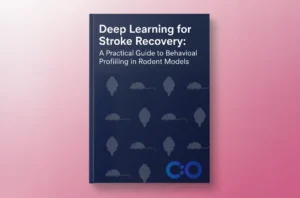

The Zebrafish 5-Choice Maze stands at the frontier of translational neuroscience. Modeled after the Five-Choice Serial Reaction Time Task (5-CSRTT), this maze is a precision-engineered platform for evaluating core cognitive functions such as sustained attention, learning, stimulus recognition, and inhibitory control. At the heart of this complex behavioral assay lies a deceptively simple yet profoundly informative metric: accuracy rate.
This article delves deeply into the scientific relevance of accuracy rate in the Zebrafish 5-Choice Maze developed by Conduct Science, examining how this metric captures essential elements of zebrafish cognition and why it is increasingly central in behavioral and neuropharmacological research.
Accuracy rate is defined as the percentage of correct responses out of the total number of valid trials. In the context of the Zebrafish 5-Choice Maze, each trial begins with the brief illumination of one of five cue lights in individual choice chambers. The subject, a trained zebrafish, is expected to swim toward the illuminated target zone within a predefined response window. A correct response is counted when the fish successfully enters the lit chamber.
Mathematically:
This metric is a direct and quantitative representation of the zebrafish’s stimulus discrimination capability, response accuracy, and task comprehension.
Accuracy rate is a direct behavioral fingerprint of cognitive integrity. In the Zebrafish 5-Choice Maze—a paradigm engineered to emulate the complexity of human executive tasks—accuracy rate serves as a real-time, quantifiable readout of multiple interwoven neurocognitive processes. It is not merely a performance score, but a dynamic proxy for the functional state of attentional systems, sensory integration, short-term memory, and decision-making circuitry.
Here’s why this metric deserves central attention in experimental design:
The Zebrafish 5-Choice Maze relies on a well-defined stimulus-response framework, where a brief visual cue (a lit chamber) signifies the location of a reward. Over time, zebrafish learn this contingency. An increase in accuracy rate over successive trials or days reflects:
The rise or plateau in accuracy curve can signal whether learning has occurred—and how robust that learning is under varying conditions (e.g., drug exposure, stress paradigms, aging).
Sustained attention is critical for successful task execution. Zebrafish must:
Each of these steps is susceptible to cognitive disruption. A decline in accuracy rate, even when other metrics such as response speed or locomotion remain constant, may indicate:
This makes accuracy rate a sensitive early indicator of attentional breakdown or cognitive fatigue, even before overt errors (like omissions or impulsive responses) escalate.
In higher-order neuroscience, executive functions are those that regulate planning, inhibition, and goal-directed behavior. The zebrafish, despite its evolutionary distance from mammals, demonstrates these functions in structured choice-based tasks. In this context, accuracy rate embodies:
Therefore, when testing interventions aimed at enhancing cognition (e.g., nootropics, receptor modulators), accuracy rate becomes the metric of choice to evaluate executive gain or decline.
One of the most compelling features of accuracy rate is its responsiveness to pharmacological agents. Studies have shown that exposure to:
can significantly modulate accuracy outcomes. This makes it an ideal biomarker for drug efficacy screening, especially in preclinical neuropsychiatric research.
Moreover, accuracy rate provides a fine-grained behavioral endpoint that can distinguish subtle drug effects—something binary outcomes (correct vs incorrect only) or latency scores may overlook.
Accuracy rate holds immense translational relevance for modeling cognitive disorders. In zebrafish exposed to:
a consistent reduction in accuracy rate has been documented. This decline reflects real-time deficits in information processing, attention regulation, or response execution—behaviors parallel to symptoms seen in ADHD, schizophrenia, and mild cognitive impairment in humans.
Thus, tracking accuracy in the 5-Choice Maze provides a functionally anchored, non-invasive behavioral biomarker with translational significance.
Because accuracy rate can be tracked across hours, days, or weeks, it facilitates longitudinal analysis of:
Its stability over repeated trials also makes it ideal for within-subject comparisons, minimizing variability and enhancing statistical power.
While metrics such as omission rate, response latency, and premature responses provide additional context, accuracy rate anchors the behavioral profile. It establishes a baseline measure of cognitive performance against which other behaviors are interpreted.
For example:
Thus, accuracy rate is not just one measure among many—it is the interpretive compass of the 5-Choice Maze dataset.
The Zebrafish 5-Choice Maze, engineered with a multi-chambered operant structure, requires meticulous experimental design to ensure that accuracy rate is captured with scientific validity. This framework outlines the critical phases, controls, and considerations required to reliably quantify zebrafish response accuracy during operant cognitive tasks.
Before cognitive testing begins, zebrafish must undergo a habituation protocol to reduce anxiety-related behaviors and novelty-induced thigmotaxis. The maze itself, with its distinct chambers, light cues, and central start area, can induce avoidance or erratic exploration in naïve subjects.
Why it matters: Anxious fish may avoid illuminated chambers regardless of cue, resulting in false interpretations of low accuracy.
This phase teaches zebrafish the contingency between a visual cue (LED light) and a reward (typically food, e.g., brine shrimp). Automated pellet dispensers integrated into the system can be used to standardize delivery timing and reward magnitude.
Why it matters: Without proper shaping, zebrafish may rely on chance or light aversion rather than true stimulus discrimination, skewing accuracy data.
Once trained, fish are introduced into structured trial sessions designed to quantify attention and response fidelity under defined constraints.
Why it matters: A standardized trial format enables the isolation of accuracy from confounding variables like hyperactivity, impulsivity, or fatigue.
Several extrinsic and intrinsic factors must be controlled to ensure that accuracy rate reflects cognitive ability, not environmental noise:
| Factor | Control Strategy |
| Lighting Conditions | Use consistent backlighting and LED cue intensity |
| Feeding Schedule | Standardize pre-test fasting (e.g., 24-hour food deprivation) |
| Age and Size Matching | Use size-matched adult zebrafish to minimize motor variability |
| Trial Timing | Conduct tests at the same circadian time daily |
| Water Quality & Temperature | Maintain optimal pH (7.0 ± 0.5) and temperature (28.5 °C ± 1) |
| Habituation Duration | Equalize across groups to prevent novelty-induced variability |
The ConductScience 5-Choice Maze integrates seamlessly with Conductor Software, enabling:
The software calculates accuracy in real-time and can output trial-by-trial raw data for deeper statistical analysis (e.g., ANOVA, learning curves, regression).
To challenge and extend cognitive capacity, accuracy rate can be evaluated under:
Why it matters: These advanced versions test the limits of task acquisition and maintenance, and accuracy rate becomes an even more sensitive indicator of cognitive load.
In developmental neurotoxicology and aging research, a drop in accuracy rate over time can signal deteriorating sensory integration or impaired working memory. For example, exposure to sub-lethal concentrations of heavy metals or chronic stress conditions has been associated with accuracy declines in zebrafish.
Moreover, studies from Conduct Science’s YouTube channel have illustrated behavioral protocols where accuracy metrics were tracked longitudinally to assess recovery post-intervention (e.g., after drug withdrawal or enrichment programs).
| Metric | What It Measures | Complement to Accuracy Rate |
| Omission Rate | Attention lapse or avoidance | Highlights inattention or demotivation |
| Premature Responses | Impulsivity or poor inhibitory control | Inverse correlate to task patience |
| Correct Response Latency | Decision-making speed | Indicates cognitive processing efficiency |
| Inter-Trial Responses | Hyperactivity or distractibility | Adds context to cognitive stability |
Together, these metrics form a composite cognitive profile, with accuracy rate as the keystone indicator of task fidelity.
The Zebrafish 5-Choice Maze offers a bridge between fundamental biology and translational applications. Accuracy rate, in particular, enables:
Because of its high throughput capacity and the objective quantifiability of accuracy, the 5-Choice Maze aligns seamlessly with preclinical cognitive testing pipelines.
Final Thoughts
Accuracy rate in the Zebrafish 5-Choice Maze is not a peripheral statistic—it is a central behavioral readout reflecting neural integrity, cognitive competence, and motivational state. As the life sciences accelerate toward automated, high-throughput, and scalable platforms, this metric will only grow in value.
By integrating accuracy rate tracking into experimental design, researchers are equipped not just to evaluate behavior, but to decode the mind of the model organism—trial by trial, choice by choice.
